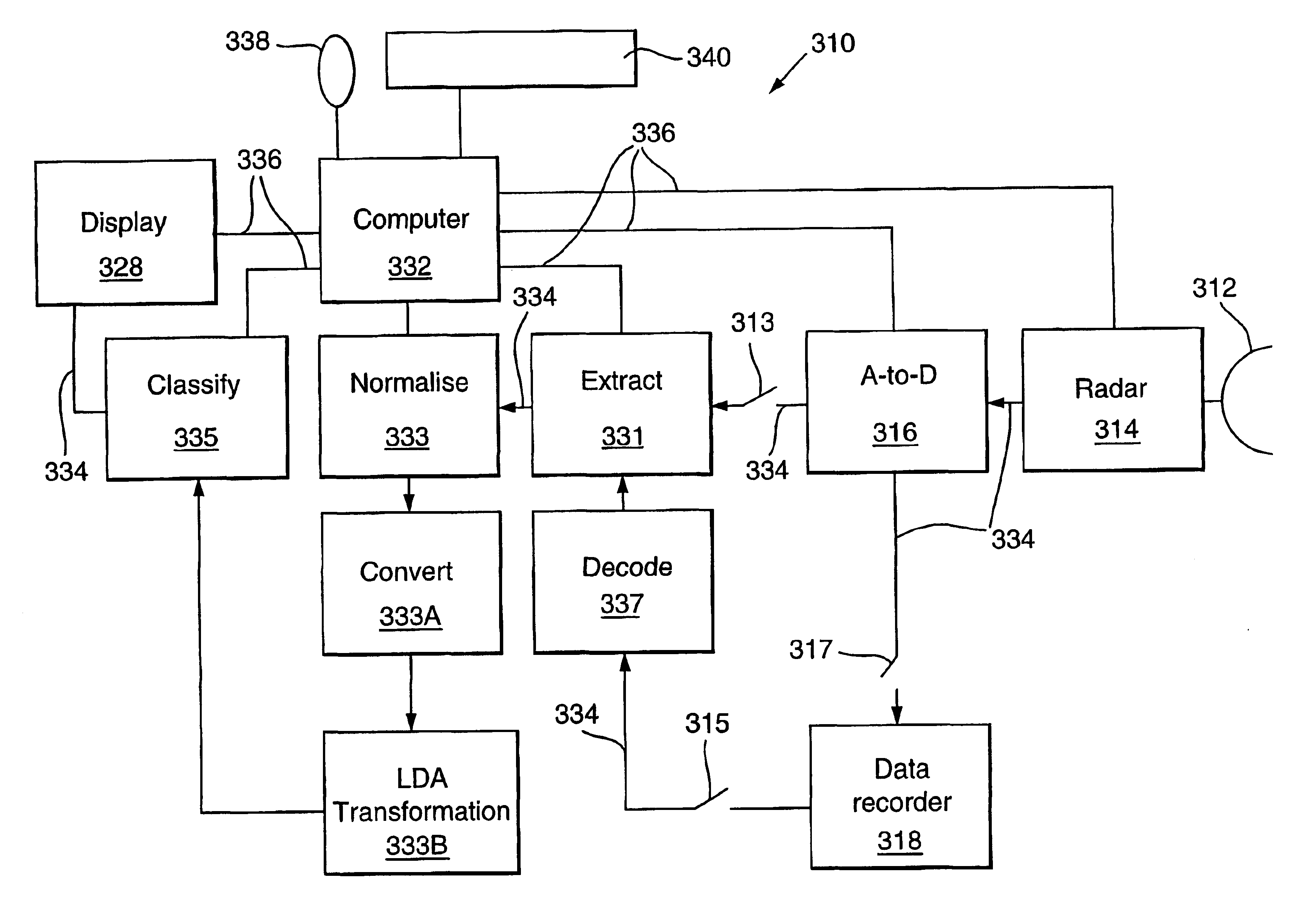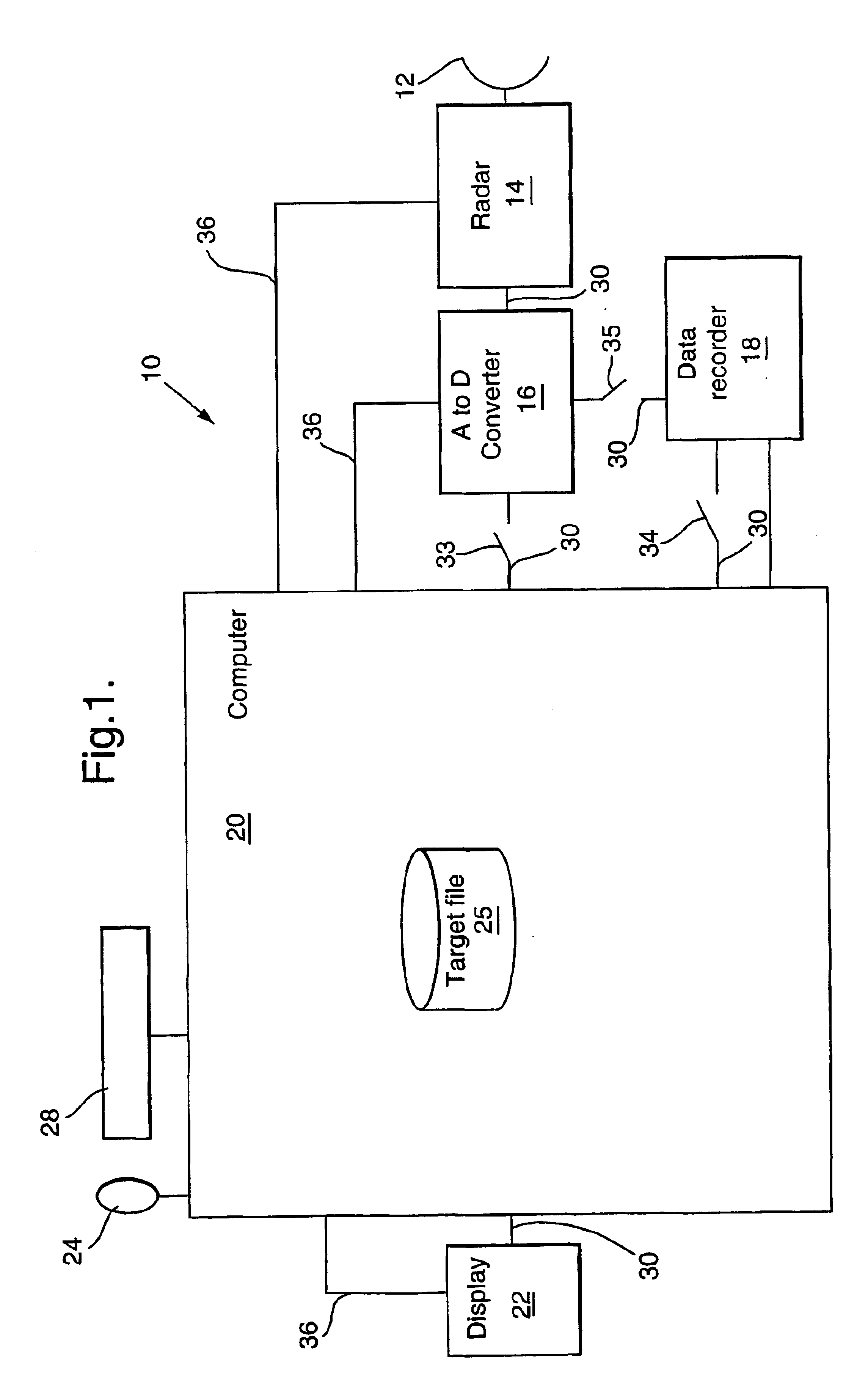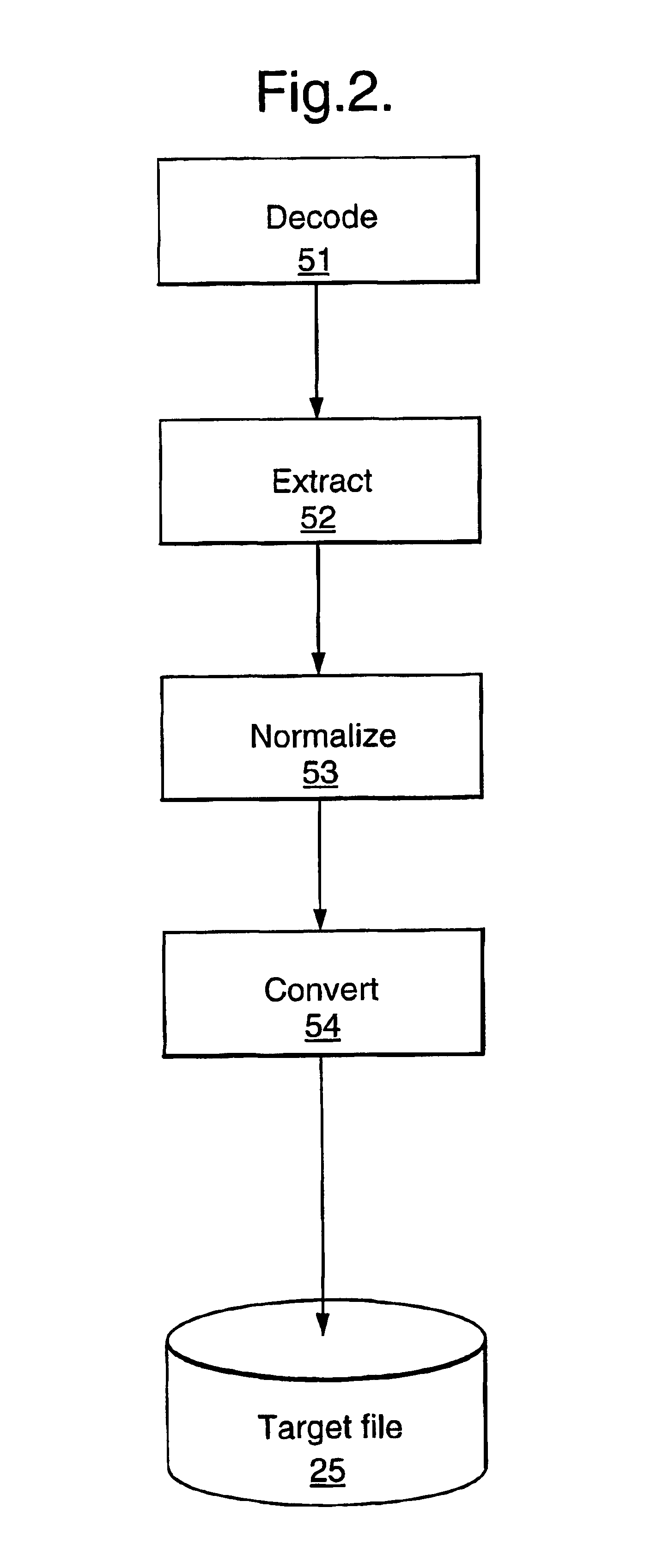Method and apparatus for recognising a radar target
a radar target and target technology, applied in the field of radar target recognition methods and apparatuses, can solve the problems of not being able to provide up-to-date information on a rapidly changing scene, unsuitable for use with mti radars, and not being able to classify all types of scenes
- Summary
- Abstract
- Description
- Claims
- Application Information
AI Technical Summary
Benefits of technology
Problems solved by technology
Method used
Image
Examples
Embodiment Construction
Referring to FIG. 1 there is shown a radar target recognition system of the invention indicated generally by 10. The system 10 comprises an antenna 12, a radar device 14, an analogue-to-digital (A to D) converter 16, a data recorder 18, a computer 20 and a display device 22. The computer 20 is under operator control via a mouse 24 and a keyboard 28. Data passes between parts of the system 10 along data lines 30, of which those between the computer and A-to-D converter 16, the computer 20 and data recorder 18, and the A-to-D converter 16 and data recorder 18 include respective switches 33, 34 and 35. Control lines 36 provide for computer-generated control signals to pass to the radar device 14, the A-to-D converter 16 and the display device 22. A communication line 37 is provided for passing messages between the computer 20 and data recorder 18.
The antenna 12 is a fixed, high gain dish antenna. The radar device 14 is a "Midas" radar which is manufactured by Thales-Wells and described...
PUM
 Login to View More
Login to View More Abstract
Description
Claims
Application Information
 Login to View More
Login to View More - R&D
- Intellectual Property
- Life Sciences
- Materials
- Tech Scout
- Unparalleled Data Quality
- Higher Quality Content
- 60% Fewer Hallucinations
Browse by: Latest US Patents, China's latest patents, Technical Efficacy Thesaurus, Application Domain, Technology Topic, Popular Technical Reports.
© 2025 PatSnap. All rights reserved.Legal|Privacy policy|Modern Slavery Act Transparency Statement|Sitemap|About US| Contact US: help@patsnap.com



